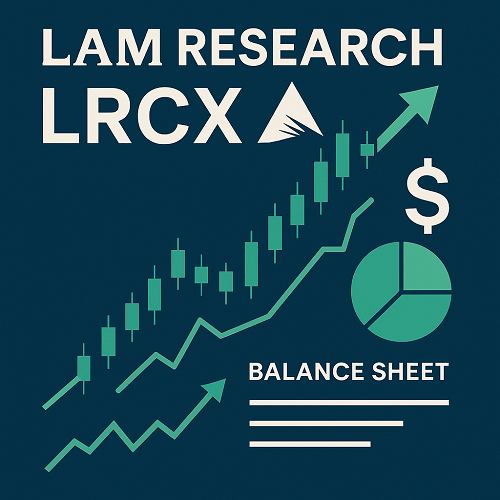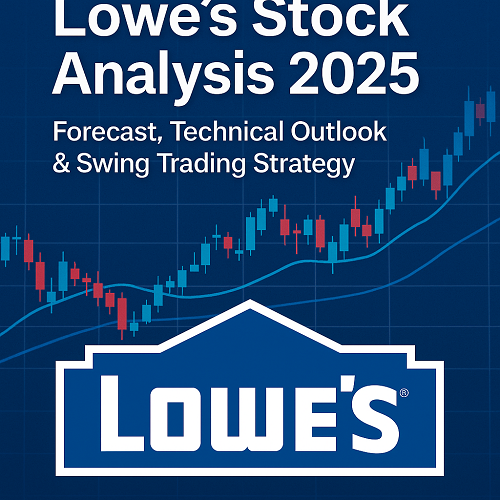NVIDIA Corporation (ticker: NVDA) is a U.S.-based technology company (headquartered in Santa Clara, California) specializing in graphics processing units (GPUs), systems on chip (SoCs), and technologies for high-performance computing, data-centres, and AI. It is a prominent player on the NASDAQ stock exchange, trading under the symbol NVDA.
Founded in 1993 by Jensen Huang, Chris Malachowsky and Curtis Priem, NVIDIA originally focused on GPUs for gaming and graphics, but over the past decade shifted aggressively into data-centre AI, inference/training, professional visualization and automotive applications.
NVIDIA is now commonly viewed as a key enabler of the AI “ecosystem” — it supplies the hardware and software backbone for many of today’s generative AI, machine learning and high-performance compute workloads. That gives it a unique strategic positioning within the semiconductor and data-centre value chain.
Why It Matters
- As AI workloads proliferate, demand for hardware (GPUs, AI accelerators) is expected to outpace many other tech segments.
- NVIDIA enjoys scale, ecosystem advantages, strong brand recognition, and early-mover status in AI/compute.
- The stock is highly watched by traders and investors as a “proxy” play on AI, cloud/datacenter growth, and future compute infrastructure.
Business Model & Key Growth Drivers
Business Segments
While specifics vary quarter to quarter, NVIDIA’s business can be broadly broken into:
- Gaming & Consumer GPUs: Historically its foundation; still meaningful but less of the driver now.
- Data-Centre & AI: Training and inference of large models, data-centre chips, high-performance GPU clusters.
- Professional Visualization & Automotive: Visual computing, automotive AI systems, embedded/edge compute.
Growth Drivers
- AI & Data-Centre Explosion
The rise of large-language-models (LLMs), generative AI, and high-performance inference is driving demand for NVIDIA’s next-gen chips and compute platforms. - Chip Architecture Leadership
Continuous innovation (e.g., upcoming “Blackwell” architecture) helps maintain leadership and higher margins. - Ecosystem & Software Stack
NVIDIA doesn’t just make hardware — it offers supporting software, libraries (CUDA, etc.), developer ecosystem which increases switching costs and strengthens moat. - Global Cloud/Enterprise Adoption
Cloud + AI infrastructure investment by mega-cloud providers (AWS, Microsoft, Google), governments, sovereign AI initiatives—all benefit NVIDIA. - Edge/Automotive/Embedded Growth
Beyond the data-centre, growth in automotive AI, edge compute, and embedded systems create additional long-term tailwinds.
Strategic Advantages
- Scale & cost recursions: Large volumes, deep R&D, strong supply-chain relationships.
- Network-effect via ecosystem: Developers, ISVs, platforms built around NVIDIA’s architecture.
- Barrier to entry: High upfront R&D, process node complexity and design investments discourage many competitors.
- Moat via diversified end-markets: Not a pure consumer-chip company; exposed to enterprise, data-centres, automotive.
Recent Performance & Market Context
Stock & Market Context
The current stock price, as per Google Finance, provides a real-time quote and charting canvas for NVDA.
NVIDIA’s valuation and market-cap have been subject to wild swings tied to AI hype cycles, export controls, and sector rotations. For example, recent articles note deals, export restrictions, and massive investor enthusiasm.
Key Recent Developments
- NVIDIA beat revenue expectations in a recent quarter, but flagged an ~$8 billion China-export headwind. r
- The company denied reports of a $1 billion AI data-center investment in Mexico, clarifying its role is cooperation/support rather than direct capital.
- Market commentary shows both bullish AI momentum and concerns (valuation, regulatory, export risks). For instance, a major analyst called a “Golden Wave” of AI adoption for NVIDIA.
Market Sentiment
Overall sentiment is cautiously bullish: the AI theme is strong, NVIDIA is central, but risks (geopolitical/regulatory/export controls) are real and must be managed.
Fundamental Metrics & Valuation
Key Valuation Metrics (Latest Available)
- Key statistics pages (e.g., Yahoo Finance) show valuation measures, share statistics, and more.
- As of recent commentaries, NVIDIA trades at a multiple somewhat below its five-year average — e.g., an analyst noted P/E around 30x vs historical ~40x.
Strengths
- Strong revenue growth, especially in data-centre/AI segments.
- High margins due to premium hardware and differentiated technology.
- Large cash flows and buyback/dividend activity — one article noted ~$83 billion returned via dividends and buybacks over the past decade.
- Growing addressable market (AI, data-centres, autonomous vehicles, edge compute) provides tailwinds.
Weaknesses/Risks
- High growth expectations baked into valuation — margin for error is tight.
- Export controls/regulatory risks (especially China) can hit sales unexpectedly.
- Intense competition and rapid technological change — leadership cannot be assumed.
- Cyclicality of tech/hardware demand means downturns possible even in strong companies.
Valuation Context
Given NVDA’s dominant position and growth prospects, many investors think a premium multiple is justified. Yet, with regulation and macro-risks rising, the margin of safety may be tighter than for historically safe stocks.
Technical Outlook & Key Trading Levels
For active traders (stock/forex/crypto-style mindset), it’s useful to map key technical levels and setups.
Chart Structure & Moving Averages
- Price recently hovered around key moving averages (50-day, 200-day). For example, one report noted the price fell below 50-day MA to ~$181.64.
- Momentum remains strong but subject to pullbacks given valuation and news catalysts.
Key Price Levels
- Support zones: Around ~$180-190 (based on recent lows and MA tests).
- Resistance zones: Could be near recent highs (depending on timeframe) or psychological levels (e.g., ~$200+).
- Breakout strategy: If NVDA breaks above a consolidation and gains strong volume, this could signal the next leg up.
- Pullback/entry strategy: For those seeking entry, watching for healthy retracements to support (or MA) might offer better risk/reward.
Risk-Management Techniques
- Use stop-losses below major support zones (e.g., if price falls below key MA or support level).
- Scale in/out positions rather than all-in.
- Monitor volume, news flow (especially export/regulation) for sudden pivots.
- Keep an eye on sector rotation: tech/AI sentiment shifts quickly.
Catalysts & Risks — What to Watch
Catalysts
- Large Data-Centre/AI Contracts — Big announcements (e.g., cloud providers, sovereign AI deals) can drive upside momentum.
- New Chip Architecture/Product Launches — Release of next-gen GPUs (e.g., Blackwell, etc.) can re-accelerate growth.
- AI Infrastructure Spending — Broader adoption of generative AI/inference infrastructure.
- Improved Guidance & Margins — If NVIDIA raises outlook or gross margins expand, it can re-ignite investor confidence.
- Regulatory/Easing Tailwinds — Any easing of export restrictions, or favourable policy for AI/hardware, would help.
Risks
- Export Controls/Geopolitical — China or other jurisdictions restricting NVIDIA’s product shipments can hit revenue. For instance, recent ~$8 billion China headwind.
- Valuation Bubble Risk — Given strong hype, a broad tech/AI pullback could hurt NVDA.
- Competition/Technological Disruption — Rivals (Intel, AMD, etc) or alternative architectures could erode market share.
- Macro/Economic Downturn — A slowdown in enterprise spending, or higher interest rates, could dampen demand.
- Earnings/Guidance Misses — With high expectations, any miss could lead to sharp corrections.
Trading & Investment Strategy Framework
Here’s a structured framework for how to approach NVDA depending on your horizon and risk-tolerance.
Short-Term Trading (days to weeks)
- Look for breakout setups above resistance or pullback entries into strong support.
- Monitor intra-day/weekly volume spikes around news (earnings, product launches, large deals).
- Use stricter risk management (tight stops, smaller position size) because volatility is higher.
- Consider options strategies (e.g., buying calls or spreads) if you’re comfortable with implied volatility and earnings risk.
Medium-Term Holding (1–12 months)
- Invest with the thesis of AI/data-centre growth but keep ready for rotation.
- Scale in over time rather than all at once — e.g., buy a portion, add on dips.
- Monitor fundamentals quarterly (earnings, margin trends, guidance).
- Use trailing stops or periodic profit-taking to lock some gains given the valuation.
- Diversify — while NVDA might be a core growth holding, having exposure to other segments (or a hedge) makes sense.
Long-Term Investment (5+ years)
- Believe in the secular theme: AI + data-centre + new compute paradigms.
- Accept that there will be volatility and corrections — but hold through if fundamentals remain intact.
- Re-evaluate periodically: is NVIDIA still market leader? Are new competitive threats emerging?
- Use dollar-cost averaging to smooth entry over time.
Conclusion
NVIDIA Corporation (NVDA) remains one of the most compelling names in the market for anyone seeking exposure to the AI/data-centre growth engine. The company boasts strong fundamentals, differentiated technology, ecosystem advantages, and a large addressable market.
However, the very strength of the story means the valuation is elevated and the risk of disappointment (whether from geopolitical/export issues or a broader tech pullback) is real. For traders, the key is to capitalize on momentum and breakout setups with disciplined risk-management. For investors, ensuring that you’re comfortable with the long-term thesis — and managing entry points and exposure — becomes critical.





 XAUT-USD
XAUT-USD  AMD
AMD  MARA
MARA  SHOP
SHOP  BULL
BULL  CL=F
CL=F